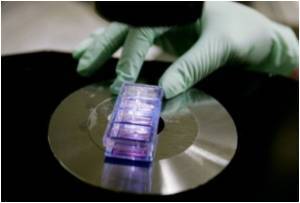A study has shed light on RNA riboswitches, a molecular switch that turns genes on or off in response to a cell's energy needs.

In addition, because riboswitches so far have been found primarily in bacteria, the study may have implications for designing new antibiotics against harmful bacteria.
"The study provides new insights into how a single RNA molecule can integrate both positive and negative signals from a cell," said senior author Martha Fedor.
Discovered only about eight years ago, riboswitches are short stretches of RNA that reside within the messenger RNAs of proteins involved in a cell's metabolism. These riboswitches bind certain metabolites and, depending on how much binding occurs, the riboswitches turn the production of the corresponding proteins on or off.
Until now, most researchers had assumed a single riboswitch was specific for a single metabolite. But the new study by Fedor's group shows a riboswitch can incorporate signals from many metabolites at once.
Fedor's group was interested in studying the function of a type of riboswitch that binds to a metabolite called glucosamine-6-phosphate.
Advertisement
It was known that when glucosamine-6-phosphate is abundant in a cell, the riboswitch stops production of the GlmS enzyme by destroying itself and its messenger RNA. This self-destruction functions to shut off any more production of glucosamine-6-phosphate.
Advertisement
Fedor and graduate student Peter Watson had designed an assay to measure the amounts of the glmS riboswitch in yeast cells as they added increasing concentrations of glucosamine. But the scientists stumbled on a puzzling finding.
If they grew their yeast in energy-rich broth that contained glycerol, a 3-carbon energy source, the riboswitch behaved as they expected, shutting off the glmS messenger RNA in response to increasing glucosamine concentrations. However, if bacteria was grown in a broth containing glucose, a 6-carbon energy source, the riboswitch no longer self-destructed.
They discovered this riboswitch can bind both glucosamine-6-phosphate and glucose-6-phosphate. Each compound, however, produces opposite results.
Binding glucosamine-6-phosphate induces self-destruction of the riboswitch and turns the glmS gene off; binding glucose-6-phosphate prevents self-destruction and keeps the glmS gene turned on.
The finding was published February 13, 2011 in an Advance Online Publication of the journal Nature Structural and Molecular Biology.
Source-ANI









